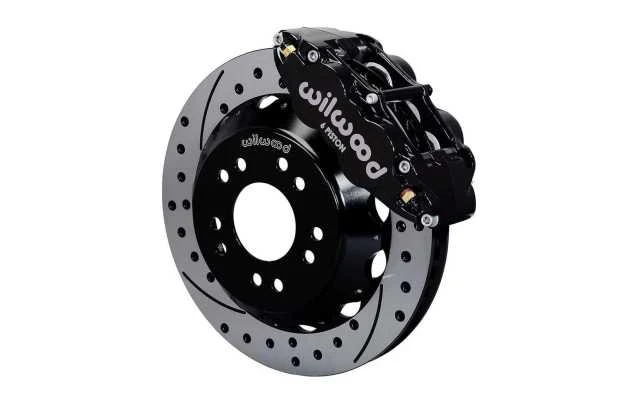ABS Function: Keeping Control at Your Fingertips
At its core, the Anti-Lock Braking System is engineered to prevent wheels from locking up during sudden braking or under heavy braking pressure. This crucial function enables drivers to maintain steering control, thereby reducing the risk of skidding or losing control of the vehicle, especially in adverse road conditions.
How ABS Works: The Inner Workings Unveiled
A Dance of Sensors and Valves
ABS operates through a delicate interplay of sensors and valves. When a driver applies the brakes forcefully, sensors detect the speed of each wheel. If a wheel is on the brink of locking up, the system intervenes by modulating brake pressure through a series of hydraulic valves.
Master Cylinder: The Heart of Hydraulic Power
At the heart of the ABS lies the master cylinder, which serves as the primary source of hydraulic pressure. This pressure is then distributed to each wheel as needed, ensuring optimal braking performance.
Speed Sensor: Eyes on the Wheels
The ABS relies on speed sensors located at each wheel to monitor their rotational speed. By constantly assessing wheel speed, the system can detect any anomalies and adjust brake pressure accordingly.
Braking Valve: Precision Control in Action
Critical to the operation of ABS is the braking valve, which regulates hydraulic pressure to prevent wheel lock-up. Through precise modulation, the braking valve ensures that braking force is applied evenly across all wheels, maximizing stopping power while maintaining stability.
Pump: Powering Precision Braking
The ABS pump plays a pivotal role in maintaining hydraulic pressure within the braking system. By constantly circulating brake fluid, the pump ensures rapid response times and consistent braking performance, even under challenging conditions.
Controllers: The Brain Behind the Brakes
Central to the ABS is its electronic control unit (ECU), which serves as the brain of the system. The ECU continuously analyzes data from wheel speed sensors and makes split-second decisions to optimize brake pressure, keeping the vehicle safely under control.
Hydraulic Brake Channels: Channels of Safety
Hydraulic brake channels serve as conduits for transmitting hydraulic pressure from the master cylinder to the individual brakes. Through these channels, ABS can precisely modulate brake pressure, preventing wheel lock-up and maintaining traction.
At the heart of the ABS lies the master cylinder, which serves as the primary source of hydraulic pressure. This pressure is then distributed to each wheel as needed, ensuring optimal braking performance.
Speed Sensor: Eyes on the Wheels
The ABS relies on speed sensors located at each wheel to monitor their rotational speed. By constantly assessing wheel speed, the system can detect any anomalies and adjust brake pressure accordingly.
Braking Valve: Precision Control in Action
Critical to the operation of ABS is the braking valve, which regulates hydraulic pressure to prevent wheel lock-up. Through precise modulation, the braking valve ensures that braking force is applied evenly across all wheels, maximizing stopping power while maintaining stability.
Pump: Powering Precision Braking
The ABS pump plays a pivotal role in maintaining hydraulic pressure within the braking system. By constantly circulating brake fluid, the pump ensures rapid response times and consistent braking performance, even under challenging conditions.
Controllers: The Brain Behind the Brakes
Central to the ABS is its electronic control unit (ECU), which serves as the brain of the system. The ECU continuously analyzes data from wheel speed sensors and makes split-second decisions to optimize brake pressure, keeping the vehicle safely under control.
Hydraulic Brake Channels: Channels of Safety
Hydraulic brake channels serve as conduits for transmitting hydraulic pressure from the master cylinder to the individual brakes. Through these channels, ABS can precisely modulate brake pressure, preventing wheel lock-up and maintaining traction.
Advantages and Disadvantages of ABS: Weighing the Pros and Cons
Advantages
Enhanced Control and Stability
By preventing wheel lock-up, ABS enables drivers to maintain steering control even during emergency braking maneuvers. This enhanced stability can be crucial in avoiding accidents and navigating hazardous road conditions.
Shorter Stopping Distances
ABS technology allows for more efficient braking, resulting in shorter stopping distances compared to traditional braking systems. This can be particularly beneficial in emergency situations where every inch counts.
Improved Traction on Slippery Surfaces
On slippery surfaces such as wet or icy roads, ABS helps to maximize traction by preventing wheels from skidding. This not only enhances overall vehicle stability but also reduces the risk of hydroplaning and loss of control.
By preventing wheel lock-up, ABS enables drivers to maintain steering control even during emergency braking maneuvers. This enhanced stability can be crucial in avoiding accidents and navigating hazardous road conditions.
Shorter Stopping Distances
ABS technology allows for more efficient braking, resulting in shorter stopping distances compared to traditional braking systems. This can be particularly beneficial in emergency situations where every inch counts.
Improved Traction on Slippery Surfaces
On slippery surfaces such as wet or icy roads, ABS helps to maximize traction by preventing wheels from skidding. This not only enhances overall vehicle stability but also reduces the risk of hydroplaning and loss of control.
Disadvantages
Increased Cost and Complexity
The integration of ABS into modern vehicles adds to their overall cost and complexity. From the installation of additional components to the need for specialized maintenance, ABS can contribute to higher ownership expenses.
Limited Effectiveness on Certain Surfaces
While highly effective on most road surfaces, ABS may have limited effectiveness on loose or uneven terrain. In such conditions, wheels may still lock up despite the system's intervention, leading to reduced braking performance.
Potential for False Activation
In certain situations, ABS may falsely activate, causing the brake pedal to pulsate and reducing braking effectiveness. This phenomenon, known as brake pedal feedback, can be disconcerting for drivers and may compromise their confidence in the system.
The integration of ABS into modern vehicles adds to their overall cost and complexity. From the installation of additional components to the need for specialized maintenance, ABS can contribute to higher ownership expenses.
Limited Effectiveness on Certain Surfaces
While highly effective on most road surfaces, ABS may have limited effectiveness on loose or uneven terrain. In such conditions, wheels may still lock up despite the system's intervention, leading to reduced braking performance.
Potential for False Activation
In certain situations, ABS may falsely activate, causing the brake pedal to pulsate and reducing braking effectiveness. This phenomenon, known as brake pedal feedback, can be disconcerting for drivers and may compromise their confidence in the system.
Conclusion
In conclusion, the Anti-Lock Braking System represents a significant advancement in automotive safety technology. By preventing wheel lock-up and enhancing vehicle stability, ABS plays a crucial role in mitigating the risks associated with sudden braking maneuvers. While it may come with its share of drawbacks, the overall benefits of ABS far outweigh its limitations. As we continue to embrace innovation in the automotive industry, ABS stands as a testament to our ongoing commitment to safer roads and smarter driving experiences.


